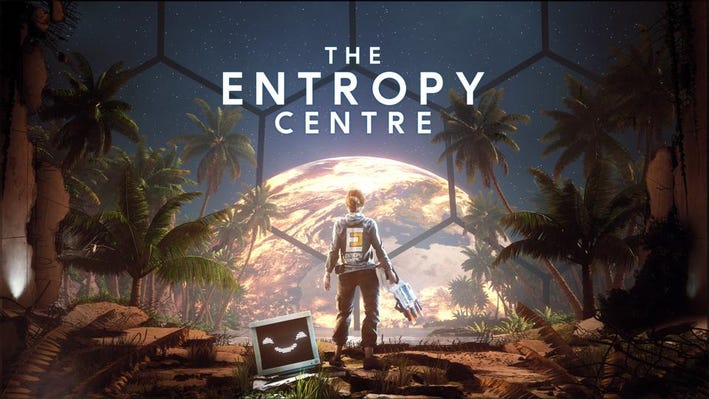
I'm a big fan of well-done puzzle games. Many of them come from indie developers and are absolutely gorgeous to look at, challenging to play, and thought-provoking to boot.
I recently completed The Entropy Centre, a time-bending puzzle game from indie game studio Stubby Games (named after the founder, Daniel Stubbington). The game is nearly perfect in many ways, and in those areas where it might have been improved it doesn't 'fall short' so much as misses some opportunities.
Rating: 8.5/10
Details below. As always, spoilers are left to the very end so that you can avoid them if you wish.
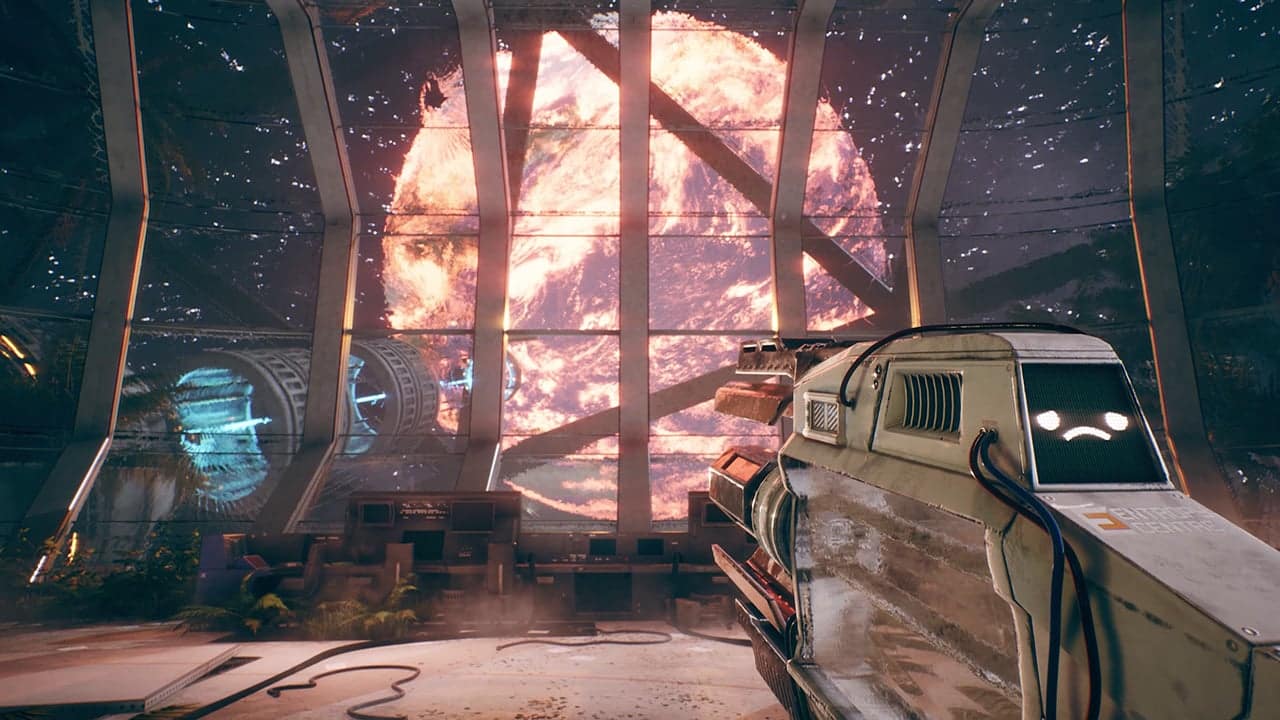
Earth Is Having A Bad Day... Again.
The player wakes up as amnesia-induced Aria, a "junior puzzle operative", in a deserted moon base called The Entropy Centre. She's not sure what's happening (or what's happened), and begins to search the area for anyone to help.
Along the way, she meets "Astra," a portable AI embedded in localized time machine - localized to very specific objects and items which can be reversed in time to a previous condition. This becomes very handy in undoing some of the damage being done to the centre, as well as the key mechanic for manipulating puzzle objects in the game.
Aria comes to find out that the situation is dire. The Entropy Centre's entire raison d'etre is to create enough energy to power a massive version of Astra that can rewind Earth whenever planet-destroying catastrophes occur (solving puzzles generates the energy needed to do this).
Along the way, Aria observes the Earth get destroyed, and the only possible solution is to solve the puzzles and generate enough entropy energy to rewind it with enough time to spare so that the Powers That Be on Earth can work to avoid the calamity in the first place.
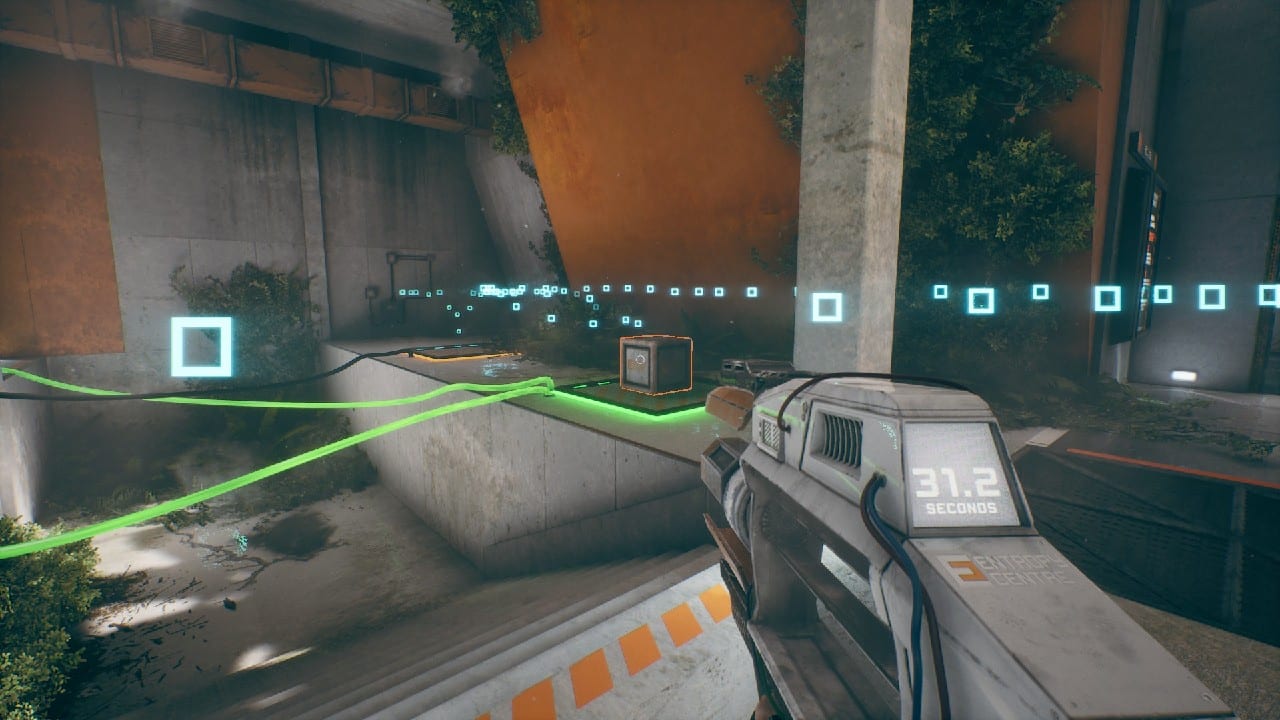
Perfect Mechanics
Along the way, you are gradually introduced to different kinds of puzzle elements, all related to functions inherent in the puzzle cubes. The basic cube eventually graduates to a jump cube, and then laser cubes, 'tall' cubes, time gates, bridge cubes, conveyor belts and reversible fans all play roles in solving the puzzles.
In my playthrough, I had no bugs, no performance issues, no glitches, and no clipping. It's a level of quality to which I wish more companies would aspire. The only complaint that I really had was that from time to time, jumping off a ledge to hit a jump cube felt awkward and frustrating when it seemed like the physics should have responded in a particular way but instead I overshot. Of course, it probably was just user error.
Additionally, the voice acting in the game was top-notch. I was a bit surprised to learn, subsequently, that this was Chloe Taylor's (Aria) first VG voice acting experience. Talk about nailing it!
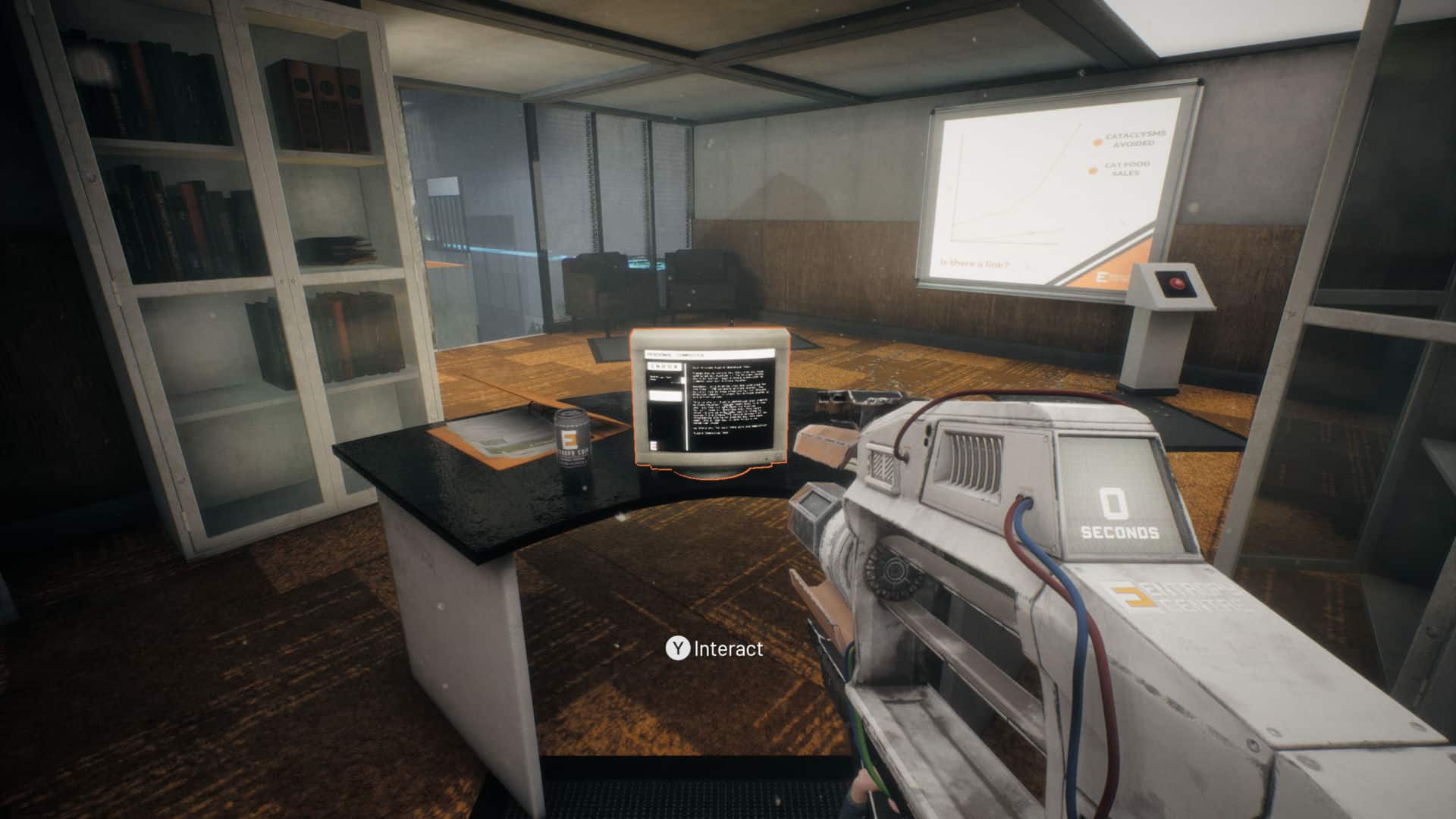
Everything Old Is New Again
The game is, first and foremost, a puzzle platformer. Obvious comparisons to Portal are obvious, thanks to the use of a handheld device mechanic. In truth, though, the puzzles are created far more akin to The Talos Principle in design and execution, and that comparison is not a bad one. Like TTP, Entropy Centre requires significant lateral thinking skills in addition to temporal ones, and it succeeds brilliantly on this level.
One of the reasons why I associate EC to TTP more than Portal is because the game has considerably more lore that accompanies the gameplay. Not only does it mix up the activities a bit, but it also helps create a bit of mystery that makes it more than "solve puzzle/next puzzle/repeat." In fact, this was a lesson that was gleaned more in Portal 2 than in the original, to great effect.
Like System Shock or BioShock, you learn of life at Entropy Centre through emails that you find on various terminals throughout the station. It's always amazed me just how much you can pull through very short exchanges, and they do a great job fleshing out some of the lived experiences (and issues) of the staff living situation.
I think it's important to note that these mechanics do not detract from the game at all, just because they've been used in various forms before. On the contrary, it's a brilliant way to world-build (no pun intended) without interfering with the gameplay.
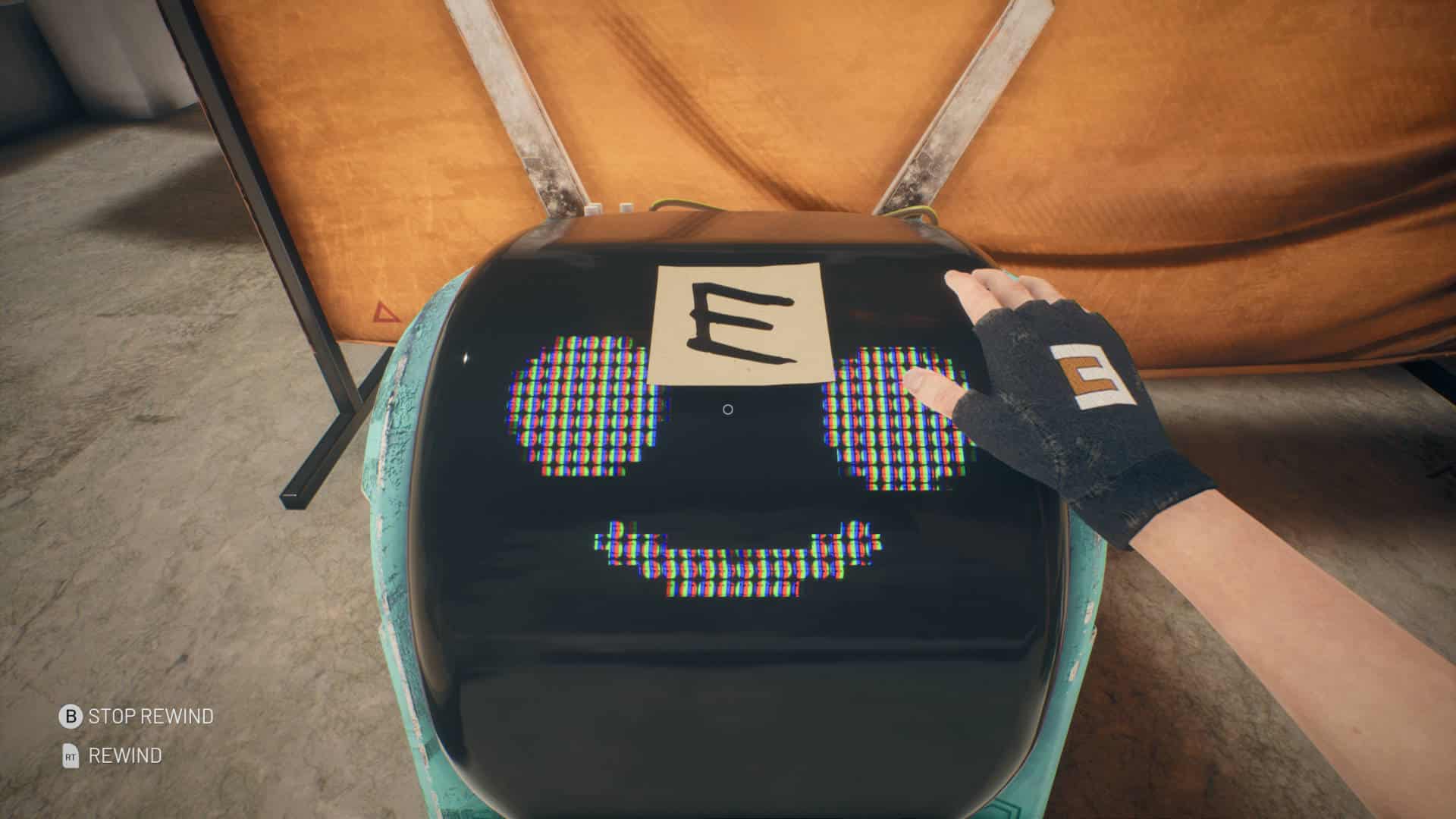
An Awful Lot to Like
There's a... quirky nature to the game that is infectious.
One of the things that Stubby games manages to absolutely nail is the balance between when to intervene with character and story and when to stay the hell out. You'd think that in games like this it would be obvious that you may not want to be interrupted with jokes or unnecessary (or unwanted) interference, but alas that is not always the case.
Fortunately, Entropy Centre doesn't invade your thought processes with chatter or unnecessary clutter. Many times when I was trying to solve a particularly troublesome puzzle, I would simply stay in one spot and mentally process what I needed to do. Many games would have thrown in some sort of comment or forced hint (I'm looking at you, The Room) if it thought I had taken too long.
There was none of that annoyance in this game. When you were in a puzzle, it let you get on with it. Whether you finished in 30 seconds or 30 minutes (no, I didn't take that long on any of the puzzles, it's just an expression) the game simply let you get on with it.
Generally speaking, I also really liked the diversity of the puzzles. Each one was unique, even though it was made up of familiar components. No two solutions relied on the same puzzle-solving approach, which kept the game from devolving into repetition.
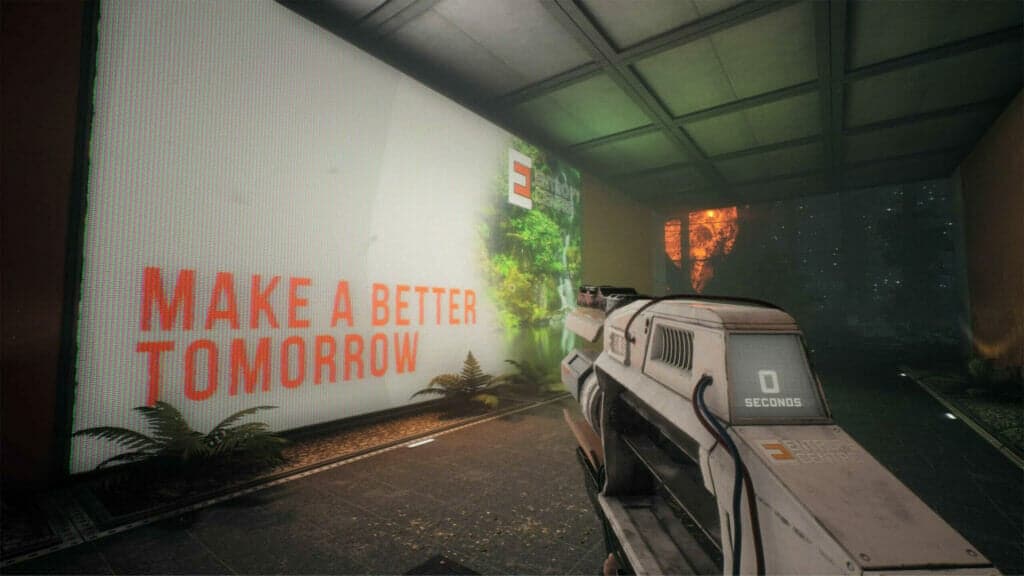
Some Missed Opportunities
I won't go into too much detail here, because I don't want to risk spoiling the story or the ending of the game, but there are a couple of things that could have been a wee bit stronger.
One of the more curious situations was that it was possible for Astra to fire some sort of energy ball (on PC, the 'R' key), but it didn't actually do anything. It fired and then fizzled. I thought perhaps it might be to combat the hostile bots, but I never did find out what it was for. It felt like a holdover to an earlier functionality or game mechanic that was abandoned but not removed in the final game release.
Generally speaking, the clues that have been left behind on the Station imply a much richer and involved storyline that we never get to see or learn about. There are clues left throughout (e.g., the aforementioned terminal emails, powerpoint presentations that have been left running, graffiti on the walls) that speak to some interesting and profound events.
Perhaps one of the most obvious things that could have been expanded upon was the existential questions of working at the Entropy Centre in the first place. In one email entry, we see a reply to a distraught worker who has realized that the Earth has been rewound to a point before he was born, and thus as a result HR has the unfortunate responsibility of informing him that he is now prohibited from ever returning back.
It's a throwaway discussion, but it does open up many possibilities about the dynamics on the station as a whole. Bioshock is the gold standard in this, for instance, where we learn of the conflict between various factions inside of Rapture. Here, though, we see that there are the stirrings of discontent (through this and some other emails that we read) on the station, but nothing ever comes of them.
Given what we see at the station - it's overgrown with vegetation that somehow escaped their habitats, massive damage has struck the infrastructure, worker bots appearing to gain a minor level of sentience, etc. - many of the potential possibilities are left unexplored.
Ultimately, it's not enough to cause damage or havoc to the game (it is a puzzle game, after all), but you only have to look at The Talos Prinicple to see how text-based backstory can be used to tremendously rich background effect without being a requirement to completing or enjoying the game.

Bottom Line
At the end of the day, one of the greatest compliments you can give a game developer was that you didn't want it to end.
This is certainly true in my case. I really liked The Entropy Centre and always looked forward to picking up the game to find out what was going to happen next (or happened in the past, depending upon how you look at it).
The gameplay is masterful, the voice-acting really made the game enjoyable, and the puzzles were suitably challenging without being over-the-top. Story and exposition complaints are minimal, and certainly won't detract from the enjoyment.
Rating: 8.5/10
Spoilers below, in case you are curious and want to learn more.
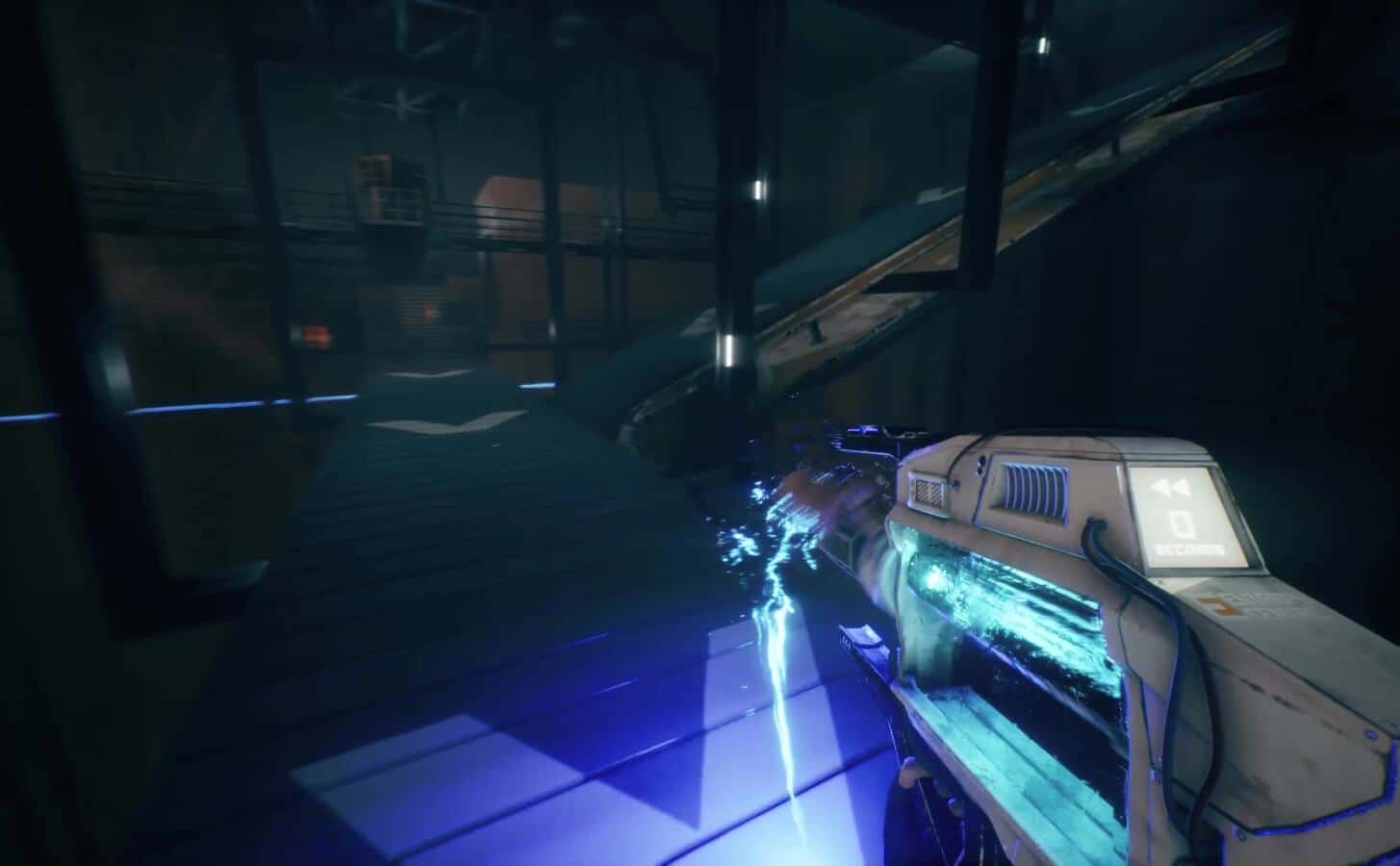
Here There Be Spoilers
Despite the raving about the game, it's not quite perfect. As a matter of fact, I get the particular impression that many really great ideas got left on the cutting room floor for the sake of getting it pushed out.
All of these issues involve the story being sacrificed, which is a shame. As noted above, there were many opportunities where some existential and philosophical questions could have filled out much of the backstory, but there were several more that involved the actual gameplay that were teased but never completed.
For instance...
Throughout the various levels, you occasionally run into a pseudo-sentient worker bot called "E." He is the only friendly bot in the entire game (unless you count Astra). For some reason, Aria has been targeted as an enemy of the Entropy Centre and when other worker bots see her, they immediately turn hostile and try to kill her.
When these bots are first introduced, Aria even wonders how and why they're coming after her. Astra tells her that they must have seen her as some kind of hostile entity. True to form, whenever Aria comes across a bot that isn't "E," they shoot slow-moving homing plasma balls at her that you must reverse back into the bot to destroy them.
It's never explained what happened, though. Early terminal messages indicate that former occupants were growing suspicious that the bots were beginning to gain sentience, but other than to create conflict for Aria at various stages of the game, there's no real purpose to the hostility of the bots, or why "E" magically shows up at key points to "E ex machina" Aria's progress.
Through one of the presentations in the offices scattered throughout the game, we see that Aria was the Entropy Centre's best puzzle solver. We can infer that she took it upon herself (in the past) to avoid evacuating with the rest of the staff and attempt to fix the entropy machine to rewind Earth back to a stable state.
There are many clues that Aria has done this more than once, and as we progress through to the later stages of the game we see hundreds of hash marks indicating each time she has 'looped' through time. Could it have happened that somewhere along the way, one of the past Arias did something to cause long-lasting issues with the bots? If so, what was it?
Recurring messages of "Find Astra" and "You've Done This Before" make the situation clear - Aria and Astra have been together on this journey numerous times. It's even implied that Astra may have been able to retain some of this knowledge somehow, but it's not ever explained how or to what degree.
Through it all, the Aria we accompany does not seem to react at all to any of these revelations. The nearly-psychotic Arias that went before her, the ones obviously in despair over the futility of the quest, the 'ghosts' of her past loops where she is completely despondent - none of these faze "our" Aria.
In fact, the ending of the game shows Aria to be completely at peace with her fate, which is completely at odds with many of the things that she had just seen. She is doomed to go through entire loop at least two more times (if the visuals at the end of the game are to be interpreted), which heavily implies that the events of the game we just played have no purpose or had any real impact whatsoever.
This leads to a very rushed ending. As beautiful as it is, the game doesn't provide any true closure of any of the questions it teases throughout, and for someone who really likes good stories (as I do), it did leave me feeling somewhat hollow.
This is particularly true as the 'mystery' that Aria has been looping for a while is not a shocking reveal. Out of the 15 levels you work through before the game admits it, I had figured out Aria's looping nature by level 4 (if not earlier). The game even chides you - "Have you figured it out yet?" Yes, yes I did. And now there's nothing actually new now that the game has 'fessed up.
None of this is to say that it 'ruins' the game - not by a long shot. As you can see by the rating (8.5 is pretty damn high, especially as most of the games I've played recently have barely hit the '6' mark at best), I thoroughly enjoyed the game and definitely wanted more.
I hope that there is a "Entropy Centre 2", much like Portal 2, where that story line becomes much more prominent and gratifying. If you go back to Portal and replay it, you'll find that many of the same criticisms could be levied there as well, but the developers of the sequel were able to use the seeds planted in the first game to really harvest a phenomenal second installment.
I truly believe that the developers at Stubby Games have the talent to do so, too.
In any case, don't wait for a mythical Entropy Centre 2. Go out and play this one, now. You really won't be disappointed.
